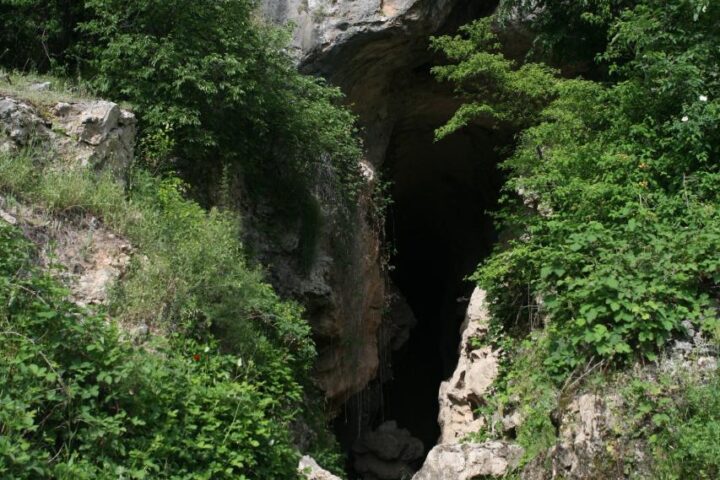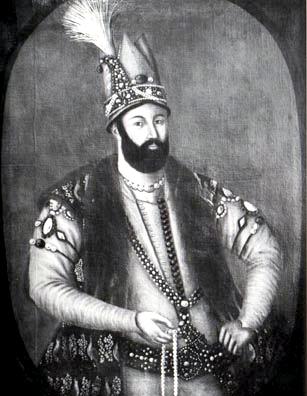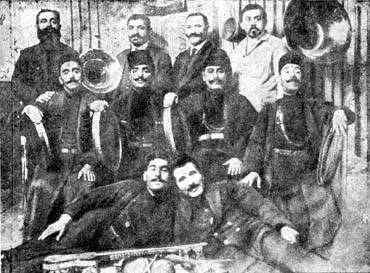At the beginning of the 18th century, the Safavid State became very weak as a result of internal conflicts and war with the Afghans. The state underwent the assault of the Afghans from the east, the Ottomans from the west and the Russian Empire from the north. The Ottomans have captured all western part of Azerbaijan, including Karabakh.
In a short period of time (1725-1727) there was prepared «the comprehensive taxation register of the Ganje-Karabakh province»[1] with the purpose to determine the sources of the income and to collect taxes regularly. Similar to «the survey tax book» of 1593, «the comprehensive taxation register» provides the names of all settlements in the province. It also becomes clear from the document, that by the time of the Ottoman occupation many people left their homes. Thus, from 1179 villages of the province, only 701 were settled, and the rest 478 villages (40.5 %) were emptied.[2]
The uniqueness of the comprehensive taxation register of the Ganje-Karabakh province is in the detailed information it provides about the demographic situation in the province and the ethnic composition of its population. The taxation register provides a list of 19.395 people responsible for paying taxes.[3] If we assume that every family consisted of approximately 5-7 people, then we can say that the population of the Ganje-Karabakh province was 96.975 people. «The comprehensive taxation register» didn’t take into account the military men consisted of only Muslims and the clergy. If to take them into account as well, then, we can safely say, that in the beginning of the 18th century despite the wars, the Karabakh population exceeded 100 thousand people.
The persons registered in «the comprehensive taxation register» were marked, based on their religious belonging, as the Muslims and non-Muslims («Gebrans»). A part of the Muslim (Azeri) population was engaged in agriculture. Another part was engaged in cattle breeding, and therefore carried out a seminomadic lifestyle driving the cattle to the lowland Karabakh in winter, and to the mountainous and foothill regions in summer. Among such communities «the comprehensive taxation register» mentions the names of the clans and communities of Jevanshir, Otuz iki, Etyemezli, Pusyan, Kebirly, Kengerly, scattered in various places after the Ottoman invasion Karachorlu, Karakoyunlu, Bayahmedli, Afsharly, Arakly and others.
By names of the taxpayers it is possible to define their ethnic belonging. The Muslim population consisted of Azeri-Turks and Kurds, whose ethnicity mentioned obligatorily in all official Ottoman documents, including the books of taxation. By this time people already referred to the non-Muslim population of Karabakh as Armenians, though the descendants of the ancient Albanians themselves still remembered their historical roots. By the way, it notable, that only 25 villages of the Ganje-Karabakh province, situated in the districts of Shamkurbasan and Beyuk Kurekbasan to the west of Ganje near the border with Armenia were marked in «the comprehensive taxation register» as the «Armenian villages».[4] In the same time, there was no non-Muslim village in the mountainous part of Karabakh in the districts of Khachen, Chelaberd and Varanda to be marked as an Armenian settlement.[5]
When calculating the ethnic composition of the population, it becomes clear, that among those who were registered in «the comprehensive taxation register» 11,818 people were Muslims (of them 11,068 Azeri-Turks and 750 Kurds); and 7,577 people non-Muslims (it is possible to say Armenians).[6] Again, if we assume that every family consisted, on the average, of 5 people, we can define that the number of the Azeri-Turk population of the Karabakh province was, as a minimum, 55,340 people (57%), Armenians – 37,885 (39%) and Kurds – 3,750 people (4%).
As already mentioned, the reason for such ethnic composition was, primarily, the Safavid-Ottoman wars. For example, on August 6, 1725 when the Ottoman troops seized Ganje, they saw that there was nobody left in the city. The population abandoned the city and as indicated in «the comprehensive taxation register», resettled to the neighboring villages and districts. In order the city not to be empty at all, the Ottomans created a quarter consisted of Armenians living in the near-situated Armenian village Kilsekend and named this quarter «mahalleyi-Kilsekend» (the Kilsekend quarter). Thus, for some time the Armenians even constituted a majority in Ganje, the Muslim population of which didn’t want to obey the Ottomans and feared reprisals for resistance.
Similar situation was experienced in almost all parts of the Karabakh province. A part of the population in lowland Karabakh moved to Shirvan and the Mughan lowland. In the mountainous and foothill regions of Karabakh the population of 40 villages out of 79, in the Keshtek district – 21 out of 28, in Varanda – 36 out of 77, in Dizak – 21 out of 79, in Kechaz – 14 out of 19, in Arasbar – 55 out of 71, in Akera – 20 out of 21, in Zaris all 12 and in Keshtasf the population of all 7 villages had to abandon their native places.[7]
By the time of the creation of «the comprehensive taxation register» there was left only 49.2% of previous Azeri-Turk population in Dizak, 13.1% in Khachen, 9.7% in Varanda, 41.6% in Ganjebasan, 37.1% in Esrik, 36.9% in Akinji, and in the Gulistan-Talish and Karakaya districts no single Azeri-Turk was left.[8] In «the comprehensive taxation register» the places, where they used to live were marked as empty villages.
Thus, the first half of the 18th century is characterised by a considerable decrease of the number of the Turk population of Karabakh caused, firstly, by wars in which only the Muslim population took part in, and secondly, by mass resettlements as a result of these wars. On the other hand, the Armenian meliks’ (feudal lords) acceptance of the Ottoman authority and neutral attitude of the Armenian population to the ongoing conflicts facilitated to the preservation and increase of the number of the Armenian population of Karabakh for the given period.
- The only original of the «comprehensive taxation register of the Ganje-Karabakh province» is kept in Istanbul, Turkey in the Government Archive (Bashbakanlik Arshivi) No 903;
- The «Comprehensive Taxation Register of the Ganje-Karabakh khanate» (Genje-Qarabaq eyaletinin mufessel defteri) foreword, remarks and translation by Husameddin Karamanlu, Baku 2000 p. 7 (in Azeri);
- Id. p. 12;
- Id. p. 13;
- Id.;
- Id.;
- Id. p. 16;
- Id.;






